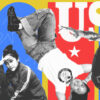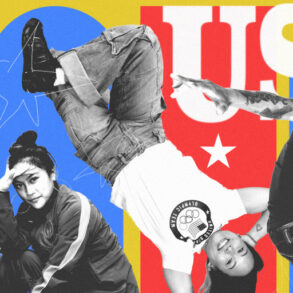Exploring the vast landscape of hip-hop music prompts a compelling question: What distinguishes old school from new school rap? This inquiry unveils a nuanced examination of styles and epochs within the hip-hop genre. While a concrete definition remains elusive, a prevailing consensus situates old school rap in the late 1970s and early 1980s, with new school rap emerging from the mid-1980s onward. Let’s delve deeper into the multifaceted distinctions between old school and new school rap:
Old school rap, emblematic of hip-hop’s formative years, emerged in the late 1970s, reaching its peak in the vibrant 1980s. Pioneering rhythmic expressions and simpler beats, it drew from funk, soul, and disco. In contrast, new school rap, evolving from the late 1980s to today, embraces a diverse musical palette, incorporating electronic, R&B, and various genres. Advancements in technology introduced more complex beats with synthesizers and digital techniques. This evolution gave rise to diverse lyrical themes, vocal styles, and production approaches within hip-hop. sdvs
Old school rap lyrics exuded simplicity, directness, and an inclination towards party-oriented themes. In contrast, new school rap lyrics underwent a transformative evolution, embracing complexity, diversity, and heightened social consciousness. The transition from rhyme schemes and wordplay in old school rap gave way to the exploration of metaphors, storytelling, and profound personal expression in the new school era.
The sonic journey of old school rap was profoundly shaped by influences from disco, funk, and an array of genres, relying on techniques like sampling, scratching, and looping. On the flip side, new school rap absorbed inspiration from rock, pop, and a kaleidoscope of musical genres. Synthesizers, drum machines, and digital production techniques became instrumental in crafting the distinctive sonic palette of new school rap.
In terms of vocal delivery, old school rappers were known for their lucid and articulate presentation, coupled with a rhythmic and deliberate flow that underscored the mastery of their craft. In contrast, the new school wave witnesses rappers exploring a spectrum of vocal styles, incorporating elements such as melodic singing, the use of auto-tune, and the adoption of unconventional flows.
This newer generation’s delivery is characterized by a heightened sense of energy and dynamism, reflecting a departure from traditional norms and a willingness to push the boundaries of expressive possibilities within the hip-hop genre.


Old school rap bore its cultural roots in the African American, Afro-Caribbean, and Latino communities of New York City, the very crucible of hip-hop culture. In a departure from its localized origins, new school rap transcended geographical boundaries, manifesting a more global and diverse influence as hip-hop culture permeated regions and countries worldwide.


The annals of old school rap are adorned with luminaries such as Grandmaster Flash and the Furious Five, Run-D.M.C., Public Enemy, and N.W.A. Each of these iconic artists contributed to the foundational elements of the genre. In the realm of new school rap, a myriad of voices has risen to prominence, adding further layers to the evolving narrative. Kendrick Lamar’s introspective lyricism, Drake’s genre-blending prowess, Nicki Minaj’s unapologetic charisma, and Kanye West’s avant-garde approach stand as testament to the diversity and innovation within the new school paradigm.
Old school rap, rooted in the streets of New York, emanated a localized influence that reverberated within urban communities. In contrast, new school rap, with its global reach, has become a cultural force shaping musical landscapes across continents.
In conclusion, the dichotomy between old school and new school rap extends far beyond temporal distinctions. It is a dynamic interplay of lyrical themes, sonic aesthetics, cultural influences, and a diverse array of iconic artists that enrich the ever-evolving tapestry of hip-hop music. As we traverse this expansive journey, the nuances and innovations within each era beckon us to appreciate the resilience and adaptability of hip-hop as a cultural phenomenon.
This post was originally published on this site be sure to check out more of their content.








